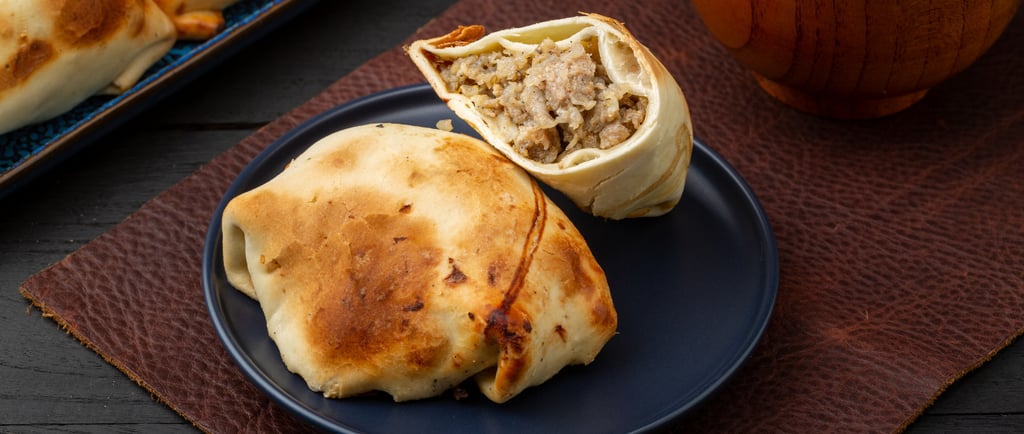Journey West @ www.xinjiang.travel
Baked Lamb Buns (Kawap Baozi): Xinjiang’s Golden-Crusted Delight
Crispy on the outside, juicy on the inside — Xinjiang’s baked lamb buns are a savory treasure of Uyghur cuisine. Discover the history behind this street food favorite, how it’s made, what makes it special, and why it’s a must-try for every traveler.
XINJIANG FOOD
Daniel Bai
5/14/20252 min read


A Flavor from the Silk Road
Baked lamb buns, known in Uyghur as Kawap Bāozi (烤包子), are one of Xinjiang’s most iconic street snacks. With roots in the culinary traditions of the Uyghur people, these golden, meat-filled pastries reflect the strong Central Asian influences that have shaped the region’s food culture for centuries.
Unlike the typical steamed baozi found across China, Xinjiang’s version is baked in a traditional clay oven — similar to a tandoor — giving it a crisp, golden-brown crust and a rich roasted flavor. This method of cooking connects directly to ancient nomadic and Turkic food traditions, passed down through generations.
How It’s Made: A Perfect Balance of Dough and Filling
What sets Xinjiang baked buns apart is the harmonious combination of simple ingredients and masterful preparation. Here’s what goes into them:
For the dough:
All-purpose flour
Warm water
A pinch of salt
Sometimes a bit of oil for a softer interior
For the filling:
Ground lamb or beef (lamb is more traditional)
Chopped onions
Salt and pepper
Cumin, black pepper, and sometimes chili flakes
Optional: lamb fat for extra richness
Preparation Steps:
The dough is kneaded until smooth and rested.
The meat filling is prepared by mixing minced lamb, onions, and spices.
Dough is rolled out, filled with the seasoned meat, then sealed into small, tight parcels.
The buns are brushed with egg wash or oil and baked in a cylindrical clay oven until the crust turns golden and crispy.
They’re often served piping hot, straight from the oven, with vinegar or chili sauce on the side.
Nutritious and Satisfying
Though small in size, baked lamb buns pack a punch:
Protein-rich thanks to the lamb or beef
Spices like cumin aid digestion and add anti-inflammatory benefits
The oven-baked crust uses less oil than deep-fried snacks
Onion adds antioxidants and flavor depth
Served with tea or a bowl of clear soup, this dish makes a satisfying and balanced meal, especially during the colder seasons.
More Than a Snack: A Cultural Staple
You’ll find these savory buns in nearly every Uyghur neighborhood, especially in the streets of Kashgar, Turpan, and Hotan. Locals line up at street stalls in the afternoon as the smoky scent of roasting buns fills the air — a daily ritual and community moment.
For Uyghur families, baking these buns at home is a source of pride, especially during holidays like Eid al-Fitr. The traditional clay oven (called a tonur) is a cherished household item in many villages, often shared by neighbors.
Even outside of Xinjiang, baked lamb buns are gaining popularity across China and beyond, thanks to their bold flavor, satisfying texture, and unique cultural charm.
Final Thoughts
Baked lamb buns are more than a snack — they’re a bite-sized expression of Xinjiang’s soul. With their smoky crust, juicy center, and centuries-old tradition, they remind us that some of the best food in the world is found not in luxury restaurants, but on the streets where history meets the everyday.
If you ever find yourself in Xinjiang, don’t leave without tasting one. And if you can’t get there yet — perhaps, bring a little of Xinjiang to your kitchen.
